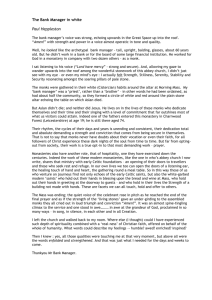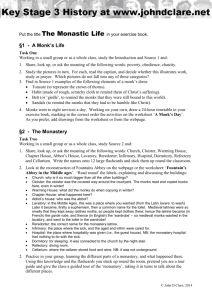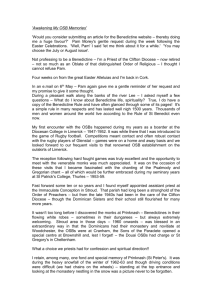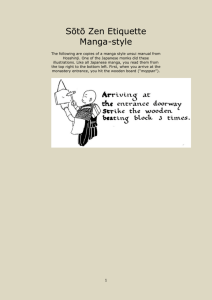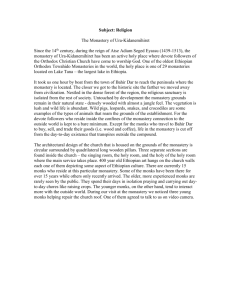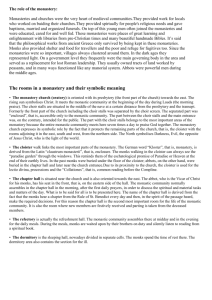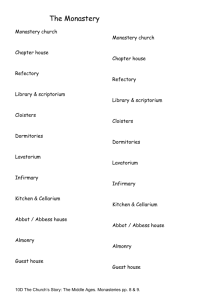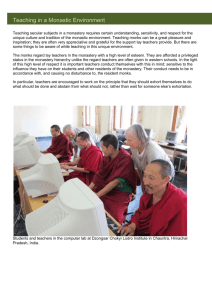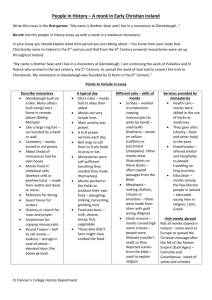Knights Journal Part 3 - Waynesville School District
advertisement
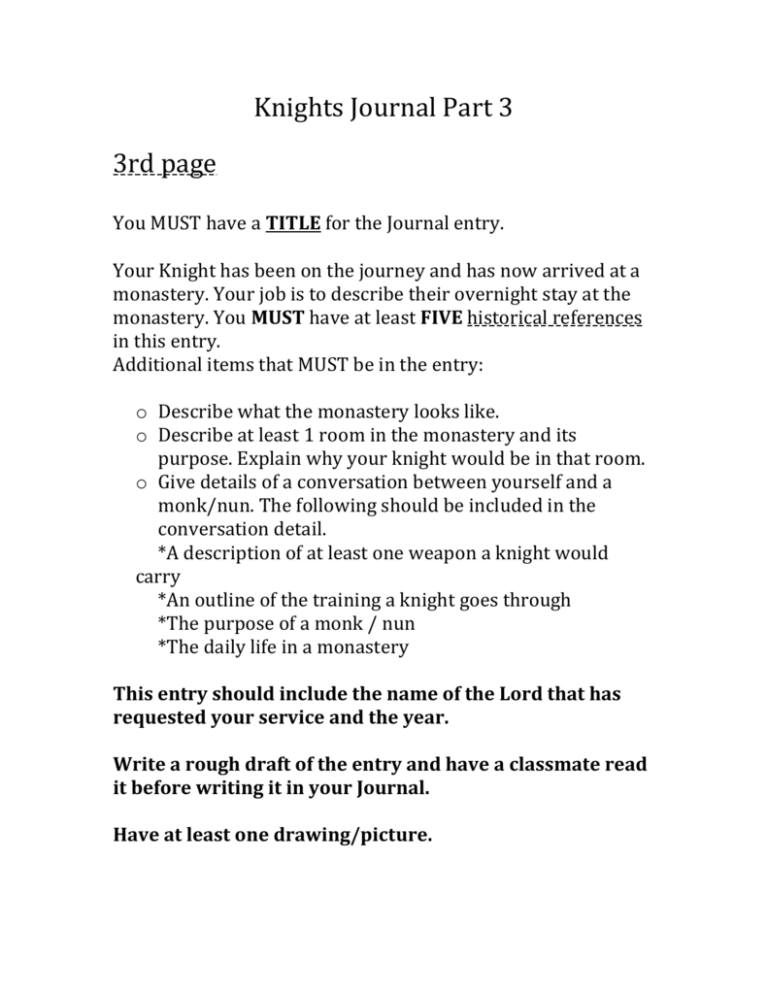
Knights Journal Part 3 3rd page You MUST have a TITLE for the Journal entry. Your Knight has been on the journey and has now arrived at a monastery. Your job is to describe their overnight stay at the monastery. You MUST have at least FIVE historical references in this entry. Additional items that MUST be in the entry: o Describe what the monastery looks like. o Describe at least 1 room in the monastery and its purpose. Explain why your knight would be in that room. o Give details of a conversation between yourself and a monk/nun. The following should be included in the conversation detail. *A description of at least one weapon a knight would carry *An outline of the training a knight goes through *The purpose of a monk / nun *The daily life in a monastery This entry should include the name of the Lord that has requested your service and the year. Write a rough draft of the entry and have a classmate read it before writing it in your Journal. Have at least one drawing/picture. The different parts of a Benedictine Monastery Whether large or small, the architectural structure of all the Benedictine monasteries reflects the monastic conduct indicated in the Regula, providing space for places of the soul. The Church: the dominant element of the monastery, with its domes and towers, it occupies a central position in the complex of buildings that make up the abbey, reflecting the nature of the activity carried out there. This is often where benefactors of the community are buried and the remains of saints are preserved. Interior of the Abbey of Montecassino The Chapterhouse: this is the seat for official assemblies in monastic life, as well as the setting for readings from the Regula. Even though the passage that is read does not necessarily correspond to a chapter, this name still indicates the room in which the monks increased their knowledge of their code. The Cloisters: at the centre of these open spaces are flowerbeds and the traditional well. The cloisters unite the different buildings together, becoming like a framework for the monastery, and are used by the monks for walking under cover. The Rule of silence is strictly observed in the cloister. The library: has always been of great importance in the monastery, as reading and study play an integral part in Benedictine monastic life. The libraries house rare books and manuscripts collected by the monks over the years. The dormitory: from a common place for sleep, as prescribed by St. Benedict, this has since been replaced over the years by the single cells that came into general use in the XV century. The refectory: is the place for eating together, during which, in order to raise the smallest actions carried out during the day to the status of profoundly religious acts, the food is blessed and Pharmacy in the Carthusian Monastery of Trisulti accompanied by a reading from the Holy Scriptures, as laid down in the Regula: “There must always be a reading in the dining hall of the brothers”. The guest rooms: the monasteries were often located along busy roads and were equipped to offer hospitality to simple travellers, or kings, princes and bishops. The infirmary and the pharmacy: entrusted to the care of a doctor-monk, the infirmary was equipped to take care of ill or weak monks or other guests who needed help. The pharmacy was linked to the infirmary. The garden of the “semplici” or herbs: this was the name of the vegetable garden set aside for the cultivation of medicinal herbs, used by the monks to prepare medicines. The farm: the land belonging to the abbey was cultivated directly by the monks, or entrusted to local farmers, to produce foodstuffs, which gave the monks an opportunity to work and also provided the abbey with a way of supporting itself and producing its food independently. Connected to this activity are the Stores and the Larders where food was stored under the supervision of one of the monks. The cemetery: On their death, the monks were buried in the monastery’s own cemetery. Thus the deceased monks were able to remain in the monastery and those still alive were able to maintain their memories of their brothers. Cloister in the Abbey of Casamari
